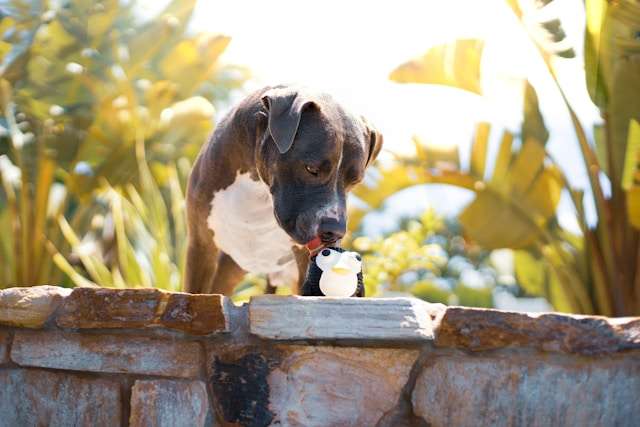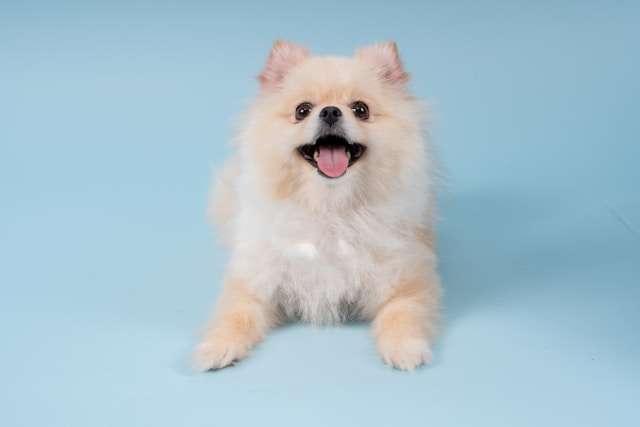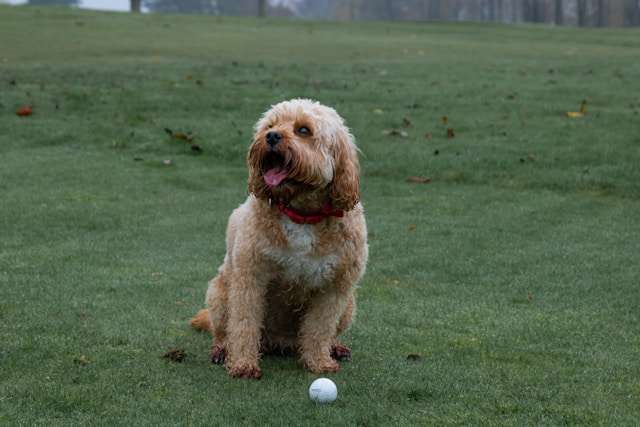Blue Heelers: Essential Facts About Australia’s Hardworking Cattle Dog

Blue Heelers are intelligent and hard-working dogs. They get their name from the bluish color of their coat. These dogs come from Australia and were bred to herd cattle. Blue Heelers are loyal and active and need lots of exercise and mental challenges to stay happy and healthy.
Blue Heelers are also called Australian Cattle Dogs or ACDs. They’re medium-sized dogs with solid bodies and sharp minds. These pups love to work and play. They do best with owners who give them plenty of time and attention.
Knowing what they need is good if you’re considering getting a Blue Heeler. They like having a job to do and need regular exercise. With the proper care and training, Blue Heelers can make great pets for active families.
Table of Contents
Key Takeaways
- Blue Heelers are smart, loyal dogs that need lots of exercise and mental stimulation.
- They were bred in Australia for herding cattle and had solid working instincts.
- Blue Heelers do best with active owners who can give them plenty of attention and training.
Breed History and Characteristics
Blue Heelers have a rich history tied to Australia’s rugged outback. These dogs are known for their intelligence, loyalty, and strong work ethic. Let’s explore their origins, physical traits, and typical behaviors.
Origins in the Australian Outback
Blue Heelers, also called Australian Cattle Dogs, were bred in the 19th century to help manage cattle on vast Australian farms. Their ancestry includes a mix of Dingoes, Collies, and other herding breeds.
An Englishman named Hall played a crucial role in developing the breed. He imported blue-coated herding dogs from Northumbria, which became the foundation for Blue Heelers.
These dogs were bred to withstand Australia’s harsh climate and work tirelessly over long distances. Their unique skills made them invaluable to ranchers and farmers in the outback.
Physical Attributes
Blue Heelers are medium-sized dogs with a sturdy build. They typically stand 17-20 inches tall and weigh 35-50 pounds. Males are usually slightly larger than females.
Key physical traits:
- Dense double coat
- Blue or red speckled coloration
- Erect ears
- Muscular body
Their weather-resistant coat helps protect them from harsh outdoor conditions. Blue Heelers come in two primary color varieties: blue (or blue-speckled) and red (also known as Red Heelers).
Temperament and Behavior
We find Blue Heelers to be brilliant and energetic dogs. They are known for their:
- Strong work ethic
- Loyalty to their owners
- Protective nature
- Need for mental and physical stimulation
These dogs thrive on having a job to do. They can become bored and potentially destructive without proper exercise and mental challenges.
Blue Heelers are often cautious around strangers but form strong bonds with their families. Their herding instincts may lead them to nip at heels, especially of children or other pets.
Early socialization and training are crucial for Blue Heelers. This helps channel their energy and intelligence in positive ways.
Health and Wellness
Blue Heelers are generally healthy dogs, but they can face some health challenges. Good care, proper diet, and regular exercise are vital to keeping them in shape.
Common Health Issues
Hip dysplasia is a significant concern for Blue Heelers. This condition affects the hip joint and can cause pain and mobility issues. We recommend regular vet check-ups to catch it early.
Progressive retinal atrophy is another problem to watch for. This eye disease can lead to blindness. Regular eye exams can help spot it early.
Deafness can also affect Blue Heelers. Some are born deaf or lose hearing over time. We suggest testing puppies for hearing issues.
Nutrition and Diet
A balanced diet is crucial for Blue Heelers. We recommend high-quality dog food rich in protein. This helps maintain their energy and muscle mass.
Portion control is essential to prevent obesity. Overweight Blue Heelers are more prone to joint problems.
Treats should make up no more than 10% of their daily calorie intake. Fresh fruits and vegetables can be healthy snack options.
Exercise Needs
Blue Heelers have high exercise needs. We suggest at least 1-2 hours of activity daily. This can include:
- Long walks or jogs
- Fetch games
- Agility training
- Herding activities
Mental stimulation is just as important as physical exercise. Puzzle toys and training sessions can help keep their minds sharp.
Without enough activity, Blue Heelers may become destructive or develop behavior problems. Regular exercise helps keep them happy and healthy.
Training and Mental Stimulation
Blue Heelers need proper training and mental challenges to thrive. These intelligent, energetic dogs require consistent guidance and engaging activities to stay happy and well-behaved.
Training Techniques
Training a Blue Heeler starts with basic commands like sit, stay, and come. We recommend using positive reinforcement methods. Treats and praise work well to motivate these intelligent dogs.
Consistency is key. Set clear rules and stick to them. Short, frequent training sessions keep Blue Heelers focused.
Early socialization is crucial. Expose puppies to different people, animals, and environments. This helps prevent shyness or aggression later.
Leash training is important too. Blue Heelers can be strong pullers, so teach loose-leash walking early on.
Mental Enrichment
Blue Heelers need lots of mental stimulation. Bored dogs can become destructive. We suggest puzzle toys to keep their minds busy.
The “Which Hand” game is a simple but effective mental exercise. Hide a treat in one hand and let your dog guess which one.
Scent work is another excellent option. Hide treats or toys around the house or yard for your Blue Heeler to find.
Rotate toys regularly to keep things interesting. New objects spark curiosity and prevent boredom.
Canine Sports and Activities
Blue Heelers excel in many dog sports. Agility training is a perfect fit for their athleticism and smarts. They love jumping, weaving, and racing through obstacle courses.
Herding trials let Blue Heelers use their instincts. Even if you don’t have livestock, these events are great fun.
Frisbee and flyball are high-energy games that Blue Heelers often enjoy. They satisfy the breed’s need for speed and challenge.
Obedience competitions can also be rewarding. Blue Heelers typically perform well due to their intelligence and desire to please.
Breed-Specific Considerations
Blue Heelers have unique traits that require special attention. We’ll explore their herding solid instincts, how they fit into family life, and their grooming needs.
Herding Instincts
Blue Heelers belong to the herding group and have a powerful drive to herd. This instinct can show up in various ways:
- Nipping at the heels of people or other pets
- Circling and trying to control the movement of family members
- Chasing cars, bicycles, or other moving objects
We need to channel this energy positively. Regular training sessions and jobs around the house can help. Giving them puzzle toys or participating in herding trials are great options, too.
Their prey drive is also vital. We must be careful with smaller pets and supervise interactions closely.
Living as Family Dogs
Blue Heelers can make great family pets with proper training and socialization. They are:
- Loyal and protective
- Intelligent and quick to learn
- Energetic and playful
We should provide daily exercise and mental stimulation. A bored Blue Heeler may become destructive or develop problem behaviors.
They often bond closely with one family member. Early socialization helps them get along with all family members and visitors.
Blue Heelers need firm, consistent training. They respond well to positive reinforcement methods.
Grooming and Care
Blue Heelers have a dense double coat that requires regular maintenance:
- Brush weekly to remove loose hair and dirt
- Bathe only when necessary to preserve natural oils
- Expect heavy shedding twice a year
Their nails proliferate and need regular trimming. We should check and clean their ears weekly to prevent infections.
Blue Heelers are generally healthy but can be prone to some issues:
- Hip dysplasia
- Progressive retinal atrophy
- Deafness (especially in blue-eyed dogs)
Regular vet check-ups help catch and address health concerns early.
Adopting a Blue Heeler
Blue Heelers make great pets for active families. We’ll explore two ways to bring one of these intelligent dogs into your home.
From Reputable Breeders
When looking for Blue Heeler puppies, finding a good breeder is vital. We recommend checking with the Australian Cattle Dog Club of America for breeder referrals. Reputable breeders health test their dogs and can tell you about the puppy’s parents.
Good breeders let you visit their facility and meet the puppies’ parents. They ask questions to make sure their pups go to good homes. Expect to pay $500 to $1,500 for a Blue Heeler puppy from a breeder.
Be ready to wait for the right puppy. Many breeders have waiting lists. This gives you time to prepare your home for a new dog.
Rescue and Adoption Options
Adopting a Blue Heeler can be rewarding and less expensive. Many Australian Cattle Dogs need homes across the country. Rescue groups often have both puppies and adult dogs.
We suggest checking local shelters and breed-specific rescues. Texas Cattle Dog Rescue is one group that focuses on healers. Adoption fees are usually around $300, which covers primary care and medical needs.
Rescued Blue Heelers may need extra patience and training. But they can become great pets with the proper care. Many rescues offer support after adoption to help the dog settle in.
Frequently Asked Questions
Blue Heelers are unique dogs with specific traits and needs. We’ll address common questions about their breeding, lifestyle, care, and suitability for different living situations.
What are the parent breeds of a Blue Heeler dog?
Blue Heelers come from a mix of two distinct breeds. They are the result of cross-breeding between Australian Dingos and Blue Merle dogs. This combination gives Blue Heelers their particular traits.
These parent breeds contribute to the Blue Heeler’s high energy and loyal nature. The mix also results in their unique blue-speckled coat.
Can Blue Heeler dogs adapt well to indoor living?
Blue Heelers can adapt to indoor living with proper care. They are energetic and intelligent dogs that need lots of exercise and mental stimulation.
Apartment living can work for Blue Heelers if they get enough activity. We recommend daily walks, play sessions, and puzzle toys to keep them happy indoors.
Are Blue Heelers considered high maintenance in terms of grooming and care?
Blue Heelers have moderate grooming needs. Their short, dense coat sheds seasonally and requires regular brushing.
We suggest weekly brushing to keep their coat healthy. Blue Heelers also need regular exercise and mental stimulation to stay happy and well-behaved.
Is the Blue Heeler breed suitable for families with children?
Blue Heelers can be good family dogs with proper training. They tend to form strong bonds with one person in the family.
We recommend early socialization for Blue Heelers. This helps them get along with children and other pets in the household.
Where can I find information about the Blue Heelers series post-show cast?
We don’t have specific information about the Blue Heelers TV series cast after the show ended. This question is not related to the Blue Heeler dog breed.
We suggest checking entertainment news websites or the actors’ social media profiles for updates on former cast members.
How can one purchase or adopt a Blue Heeler puppy?
We recommend looking for reputable breeders or rescue organizations to find a Blue Heeler puppy. Local animal shelters sometimes have Blue Heelers available for adoption.
Before getting a Blue Heeler, we advise researching their needs. Ensure you can provide the exercise, training, and care these active dogs require.






